Hello all! I was born on the Eastern shore of Maryland, and I have a question about what type of fowler may have been common there. I know knowledge about what the fowlers may have looked like gets scant the farther South you go, but are there any generalities regarding what may have been found during the mid 1700s around the Chesapeake bay? From what I understand there are few surviving fowlers from the areas South of the New York/Pa area? Thanks!
-
Friends, our 2nd Amendment rights are always under attack and the NRA has been a constant for decades in helping fight that fight.
We have partnered with the NRA to offer you a discount on membership and Muzzleloading Forum gets a small percentage too of each membership, so you are supporting both the NRA and us.
Use this link to sign up please; https://membership.nra.org/recruiters/join/XR045103
You are using an out of date browser. It may not display this or other websites correctly.
You should upgrade or use an alternative browser.
You should upgrade or use an alternative browser.
Chesapeake bay fowler
- Thread starter Magungo1066
- Start date

Help Support Muzzleloading Forum:
This site may earn a commission from merchant affiliate
links, including eBay, Amazon, and others.
Comfortably_Numb
The Evil Mike Brooks
Buy the book FLINTLOCK FOWLING GUNS by Grinslade. All of the answers are there. Lots of pictures too.
Thank you! I have it but I don’t remember anything on the Chesapeake area. I have to re-read it I guessBuy the book FLINTLOCK FOWLING GUNS by Grinslade. All of the answers are there. Lots of pictures too.
I have that book too and also don’t recall anything about a Chesapeake model per se, but what you could do is figure out what nationalities settled that area and then possibly pick one from their historical lineage.
I am just going for a generic colonist of English origin. A British style fowler? Similar to the ones made around NYC?I have that book too and also don’t recall anything about a Chesapeake model per se, but what you could do is figure out what nationalities settled that area and then possibly pick one from their historical lineage.
Capt. Jas.
58 Cal.
- Joined
- Aug 19, 2005
- Messages
- 3,049
- Reaction score
- 1,352
You would have had an imported fowling piece from England. See Of Sorts for Provincials for some examples of grade. There are actually Md documents for gun orders to Md in thst time frame
- Joined
- Jul 31, 2006
- Messages
- 3,936
- Reaction score
- 1,042
I would think similar to those made in Birmingham & shipped to the colonies rather than a northern gun. Have you checked into the decoy museum in Harve de Grace, MD ? They have a lot of later guns but there may be some early ones there too.I am just going for a generic colonist of English origin. A British style fowler? Similar to the ones made around NYC?
I have not! I will have to next time I am down. What are some of the characteristics of the Birmingham guns if you dont mind my asking?I would think similar to those made in Birmingham & shipped to the colonies rather than a northern gun. Have you checked into the decoy museum in Harve de Grace, MD ? They have a lot of later guns but there may be some early ones there too.
Capt. Jas.
58 Cal.
- Joined
- Aug 19, 2005
- Messages
- 3,049
- Reaction score
- 1,352
Well I thought this reference was earlier and I do think I have an earlier one for MD but here is one from 1772
Frederick Green P Letter, 26 November 1771, Wallace, Davidson & Johnson Order Book 1771-1774, Chancery Papers Exhibits 1773-1776, MSA no. 528-27, Maryland State Archives, Annapolis, Maryland, 47.
In 1772, Charles Carroll ordered:
1 neat cocking Gun 3 feet 1 In & ½ in the Barrell with brass mounting to be bot of Wm
Turvey - Stanton or Wilson, or a good as one as can be made may be got for four Guineas.
6 Steel spring charges for do to contain in each charger a load of powder & shot & no
more of each than the proper load of the gun.
1 neat small gun well fortified 1 Foot 8 Inches & ½ long in the barrell, the Barrel an Inch
& 3/15 of an Inch wide the Stock proportioned to the Barrall neatly mounted with Brass.
6 Steel Spring charges for do each to contain a full finger of powder & shot, & no more.
Direct the head of all the screw pins to each gun to be substantial and the channel in them to be cut deep that the turn Screw may take a good hold.
Direct the stocks near the muzles to be neatly capped with Brass (that part of the
stock being very apt to split) and Screws neatly & strongly fixed with the end of
each gun stick to draw the gunns. A bullet mold to each gun
Frederick Green P Letter, 26 November 1771, Wallace, Davidson & Johnson Order Book 1771-1774, Chancery Papers Exhibits 1773-1776, MSA no. 528-27, Maryland State Archives, Annapolis, Maryland, 47.
In 1772, Charles Carroll ordered:
1 neat cocking Gun 3 feet 1 In & ½ in the Barrell with brass mounting to be bot of Wm
Turvey - Stanton or Wilson, or a good as one as can be made may be got for four Guineas.
6 Steel spring charges for do to contain in each charger a load of powder & shot & no
more of each than the proper load of the gun.
1 neat small gun well fortified 1 Foot 8 Inches & ½ long in the barrell, the Barrel an Inch
& 3/15 of an Inch wide the Stock proportioned to the Barrall neatly mounted with Brass.
6 Steel Spring charges for do each to contain a full finger of powder & shot, & no more.
Direct the head of all the screw pins to each gun to be substantial and the channel in them to be cut deep that the turn Screw may take a good hold.
Direct the stocks near the muzles to be neatly capped with Brass (that part of the
stock being very apt to split) and Screws neatly & strongly fixed with the end of
each gun stick to draw the gunns. A bullet mold to each gun
Capt. Jas.
58 Cal.
- Joined
- Aug 19, 2005
- Messages
- 3,049
- Reaction score
- 1,352
Here is one from the period thats not too over the top in carving, hardware and engraving. It does have a sliding safety lock ans of course a hooked breech and keyed barrel.
Attachments
Capt. Jas.
58 Cal.
- Joined
- Aug 19, 2005
- Messages
- 3,049
- Reaction score
- 1,352
Here is a long big bore waterfowling type piece, English made circa 1750
https://www.flintlockcollection.net/w-noble/
https://www.flintlockcollection.net/w-noble/
Attachments
Those guns are gorgeous. So the fowlers in this area would have been mostly imports then? Would they have been ordered by the prospective owner or imported by a firm that sold them? Thanks!Here is a long big bore waterfowling type piece, English made circa 1750
https://www.flintlockcollection.net/w-noble/
edit: In addition, would these guns ever double as guns for militia service? thanks!
Last edited:
Capt. Jas.
58 Cal.
- Joined
- Aug 19, 2005
- Messages
- 3,049
- Reaction score
- 1,352
Special ordered by the more affluent and avaliable in stores in various grades. Somewhere i have a reference to various grades of fowling pieces available at a Virginia store.. There are militia records of Hyde Co. NC listing many fowling guns as well as buccaneer guns brought for militia service. A thorough search of MD militia records would be a good idea.
Last edited:
- Joined
- Nov 26, 2005
- Messages
- 5,214
- Reaction score
- 10,848
Hi,
Why is it that so many folks are astonished that many good quality civilian guns were imported into colonial America? I am not talking about cheap trade guns. I mean good and fine quality sporting guns. They probably made up the majority of firearms owned by colonists. Britain actively discouraged value added industry in the colonies, including gun making. I sometimes think the film "Gunsmith of Colonial Williamsburg" has somewhat mislead people's understanding of colonial American gun making and gun retailing. Most colonial gunsmiths restocked and repaired guns and even those made here usually had imported barrels, locks, and hardware. Here is a perfect example of a good quality English fowler that likely was exported to America before the Rev War. It is not a big heavy waterfowler rather a light and lively upland bird gun.
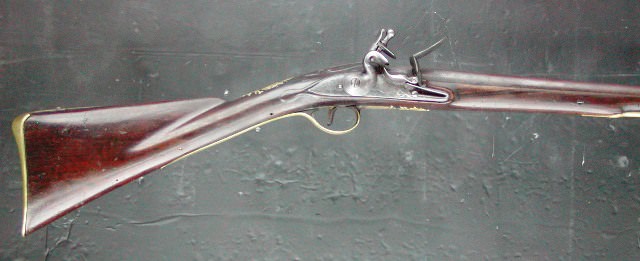


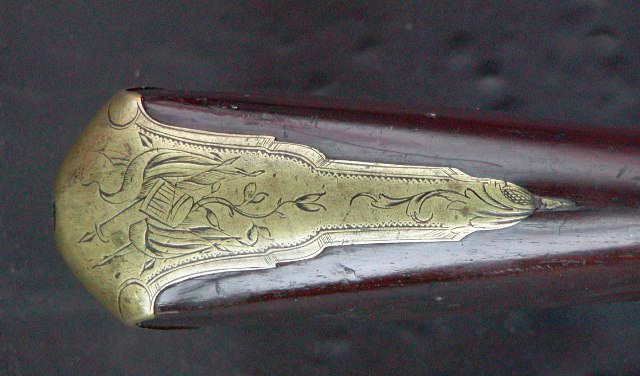
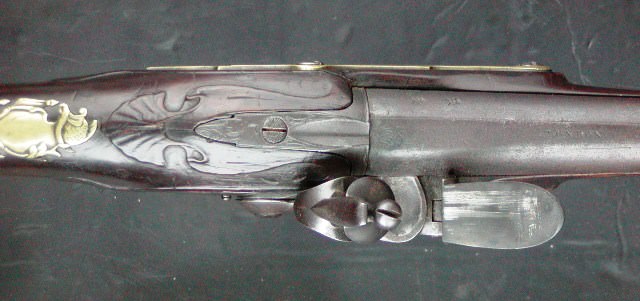

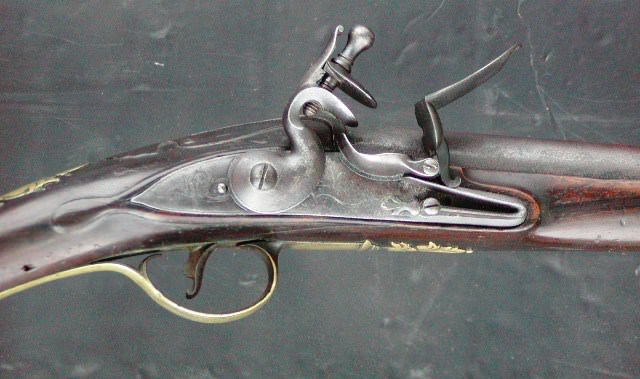
With their extreme divisions of labor, the British could pump out thousands of guns like this at prices below what it would cost to have them made in the colonies.
dave
Why is it that so many folks are astonished that many good quality civilian guns were imported into colonial America? I am not talking about cheap trade guns. I mean good and fine quality sporting guns. They probably made up the majority of firearms owned by colonists. Britain actively discouraged value added industry in the colonies, including gun making. I sometimes think the film "Gunsmith of Colonial Williamsburg" has somewhat mislead people's understanding of colonial American gun making and gun retailing. Most colonial gunsmiths restocked and repaired guns and even those made here usually had imported barrels, locks, and hardware. Here is a perfect example of a good quality English fowler that likely was exported to America before the Rev War. It is not a big heavy waterfowler rather a light and lively upland bird gun.







With their extreme divisions of labor, the British could pump out thousands of guns like this at prices below what it would cost to have them made in the colonies.
dave
Flint Striker
40 Cal
As I recall, people in the colonies were also financially better off than those in England. They had both the means to buy quality weapons and the need to own them.
https://www.mountvernon.org/george-washington/colonial-life-today/early-american-economics-facts/
https://www.mountvernon.org/george-washington/colonial-life-today/early-american-economics-facts/
That is absolutely gorgeous, and the idea of a nice “import” gun is really attractive to me. It is very cool to know that so many colonists had nice guns that came across the Atlantic.Hi,
Why is it that so many folks are astonished that many good quality civilian guns were imported into colonial America? I am not talking about cheap trade guns. I mean good and fine quality sporting guns. They probably made up the majority of firearms owned by colonists. Britain actively discouraged value added industry in the colonies, including gun making. I sometimes think the film "Gunsmith of Colonial Williamsburg" has somewhat mislead people's understanding of colonial American gun making and gun retailing. Most colonial gunsmiths restocked and repaired guns and even those made here usually had imported barrels, locks, and hardware. Here is a perfect example of a good quality English fowler that likely was exported to America before the Rev War. It is not a big heavy waterfowler rather a light and lively upland bird gun.







With their extreme divisions of labor, the British could pump out thousands of guns like this at prices below what it would cost to have them made in the colonies.
dave
- Joined
- Nov 26, 2005
- Messages
- 5,214
- Reaction score
- 10,848
Hi Magungo,
Yes, it is nice and it probably cost less than 2 pounds sterling complete with cost of shipping. That at a time when the common American rifle with the usual simple carved decoration such as those from Christian's Spring or Reading sold for 3-4 pounds and up. People, even on the frontiers could afford them. In 1749, dressed deer skins sold for 9-18 shillings per skin in Bethlehem, PA. Twenty shillings is a pound sterling so a well decorated 5 pound sterling rifle might cost 7 deer skins.
dave
Yes, it is nice and it probably cost less than 2 pounds sterling complete with cost of shipping. That at a time when the common American rifle with the usual simple carved decoration such as those from Christian's Spring or Reading sold for 3-4 pounds and up. People, even on the frontiers could afford them. In 1749, dressed deer skins sold for 9-18 shillings per skin in Bethlehem, PA. Twenty shillings is a pound sterling so a well decorated 5 pound sterling rifle might cost 7 deer skins.
dave
Thank you for all of the info! I think a fowler representing a mid-range English import is the next thing I have to track down. Knowing how common they would have been in the colonies is really cool to find out. I knew there were a decent amount of imports but I had no idea about the sheer numbers, and the variety of options that a colonist at the time had available to choose from.Hi Magungo,
Yes, it is nice and it probably cost less than 2 pounds sterling complete with cost of shipping. That at a time when the common American rifle with the usual simple carved decoration such as those from Christian's Spring or Reading sold for 3-4 pounds and up. People, even on the frontiers could afford them. In 1749, dressed deer skins sold for 9-18 shillings per skin in Bethlehem, PA. Twenty shillings is a pound sterling so a well decorated 5 pound sterling rifle might cost 7 deer skins.
dave
florkinliege
32 Cal
Walnut stocked middle of the road English fowler with a 4' or so barrel would be a great choice, something club butt with TRS "Cookson" parts and a long barrel would also seem to be good if you wanted something a tad more nautical.

Pennsylvania Gazette advertisement - Kent county Maryland dated June 10, 1756, mentioned “three Negroe men, two of them named Tom, and both six feet high; the other named Jack, about five feet eight inches high, has sore eyes... took several bags with clothes and provisions with them, and a buckaneer fashion gun.”
Kent County location
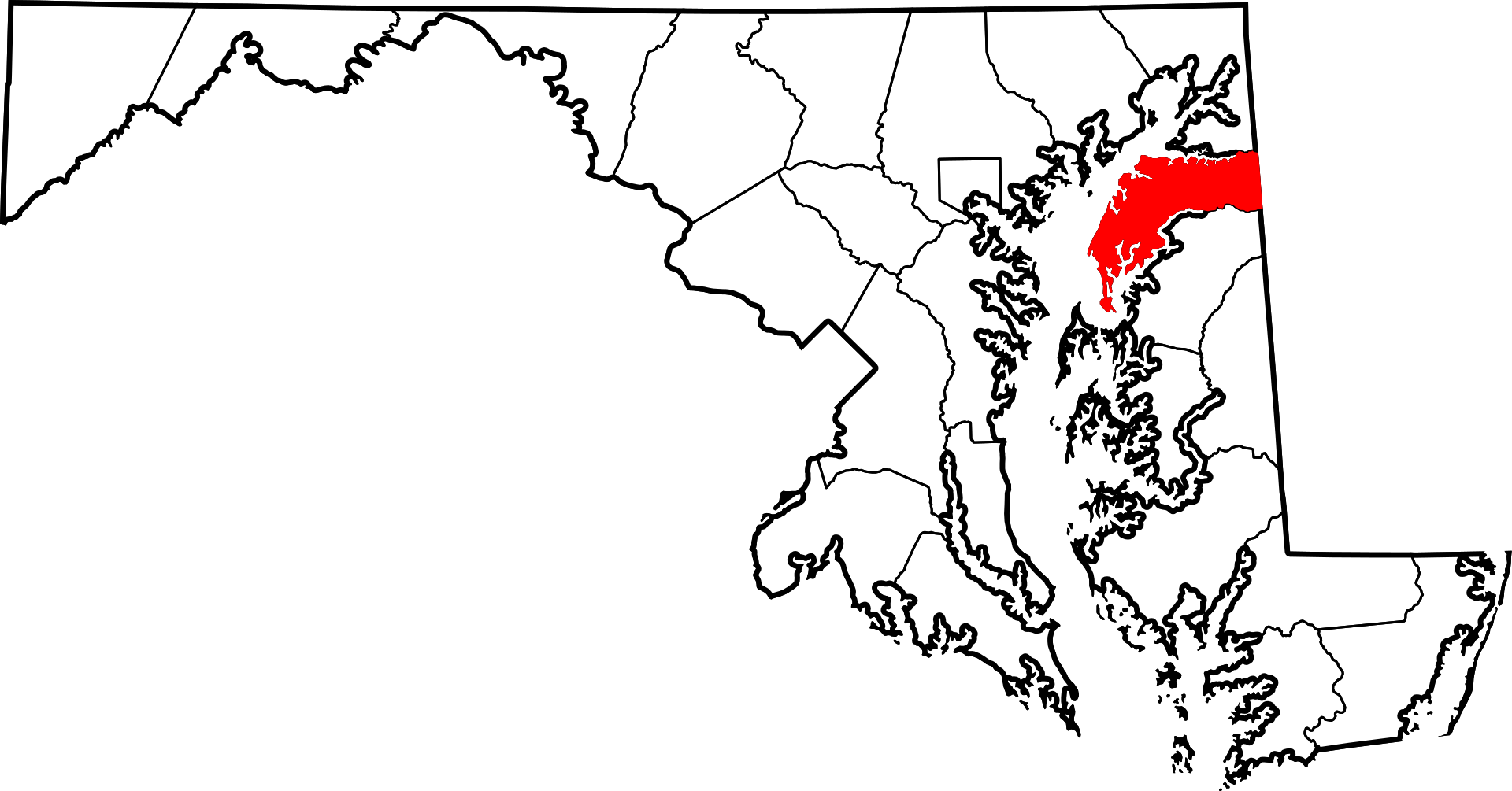
Addison site




Pennsylvania Gazette advertisement - Kent county Maryland dated June 10, 1756, mentioned “three Negroe men, two of them named Tom, and both six feet high; the other named Jack, about five feet eight inches high, has sore eyes... took several bags with clothes and provisions with them, and a buckaneer fashion gun.”
Kent County location

Addison site



Last edited:
hi dave person, what is a gun like that valued at today? thanks. mikeYes, it is nice and it probably cost less than 2 pounds sterling











